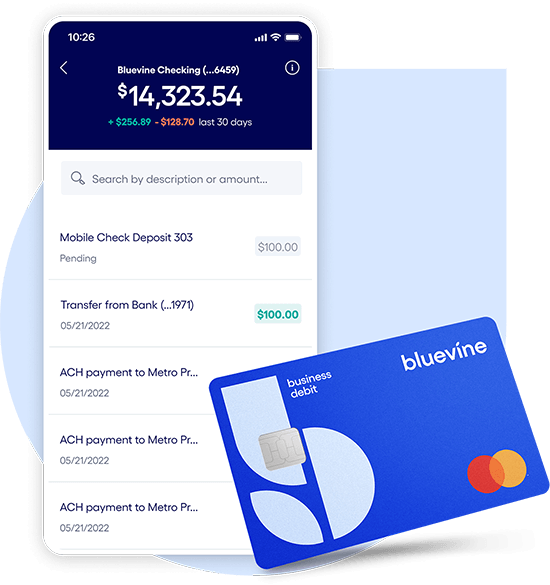As the year draws to a close, there are several ways to make sure that your business starts the new year off strong. Here, we share some tips on how you can prepare your business for a strong 2022 by setting yourself up for success and positioning yourself and your team to hit the ground running come January.
Plan out the next 12 months.
It’s hard to achieve success without having a clear idea of where you want to go. One of the most essential tasks to tackle ahead of the new year to set yourself up for success is to determine your goals. Start by evaluating where your business is right now and use that insight to set a broad, overarching goal for next year. This goal—your North Star metric—could be related to one of several categories, including revenue (e.g., monthly recurring revenue), engagement (e.g., DAU), growth efficiency (e.g., customer LTV), or user experience (NPS).
While focusing on a single goal might feel limiting, the reality is that it can help you and your team stay on track and be more strategic and cohesive in your planning and decision-making. Generally speaking, focusing on the right North Star goal will also have positive ripple effects on other areas of your business, and will thus contribute to success across categories. For example, increasing customer LTV by focusing on retention can boost revenue and increase profits by as much as 95%.
Once you’ve landed on your main goal for the year, start defining smaller goals that you can achieve over the next 12 months in order to reach your North Star goal by next December. This helps you establish a plan consisting of smaller, feasible action items that will contribute to your larger goal.
Focus on financial reporting and planning.
To properly set your budget, set revenue goals, and determine where your business plans to invest money next year, you have to first take a step back and examine performance over the last 12 months. Whether you’re working with an accountant to conduct end-of-year reporting or crunching the numbers in-house, there are three key components that you should focus on: P&L statement, cash flow statement, and balance sheet.
Together, these financial statements will tell a comprehensive story about your business finances overall, taking into account revenue, costs, expenses, cash inflows, assets, liabilities, and shareholder equity. From there, you can reflect on which decisions positively or negatively impacted revenue over the past year, as well as more granular questions, such as which marketing avenues demonstrated the highest potential ROI.
This retrospective assessment will help drive confident budgeting decisions and inform your roadmap for the coming year, such as by offering a sense of how much money you can put towards new initiatives and tests aimed at driving growth.
As you focus on financial planning for the new year, it’s also a good idea to think about having a reserve of cash or line of credit in place to lean on when needed throughout the year. This can support the business if and when cash flow slows down or can empower you to strategically finance business growth and opportunities to scale.
With lines up to $250,000 and rates as low as 4.8%, Bluevine’s Business Line of Credit gives your business the flexibility of revolving credit and allows you to draw only what you need when you need it. Discover financing that grows with your business and helps your business grow.
Settle all of your accounts.
Another financial action item to check off your pre-January to-do list is reconciling all of your accounts receivable and payable. This might mean making sure that all your vendor payments have been submitted or ensuring that you’ve gotten paid for all work completed on your end. Follow up on late invoices as needed to secure payment before the last of the month. Tying up all these accounting loose ends ensures that no straggling payments carry over from one fiscal year to the next.
A good rule of thumb with end-of-year accounting is also to do a quick assessment of your average collection period. By calculating the average number of days it takes your business to convert accounts receivable into cash, you can determine if there’s room for improvement when it comes to how quickly you get paid and how much time is spent tracking down overdue invoices.
Keep in mind, this action item is contingent on your business cycle and whether it aligns with the calendar year. Settling your accounts by December 31st is only necessary if the end of the calendar year coincides with your fiscal year-end. However, operating according to a unique fiscal year may impact your tax deadlines, in which case, you’ll want to adjust your timeline for settling accounts accordingly.
Tackle housekeeping tasks at the bottom of your to-do list.
When you’re in the daily throes of running a business, it’s easy for smaller tasks to take a backseat so you can prioritize action items that will move the needle. Unfortunately, it’s easy for these low-priority action items to pile up, which not only becomes a source of constant stress but could contribute to slower overall processes or lack of productivity.
To counteract the issue, consider dedicating your slower days at the end of the year to tie up loose ends and tackle housekeeping tasks that have been falling to the bottom of your to-do list. Organize your files, clean up your desktop, reply to unanswered emails, get paperwork and documents in order—all of these small administrative tasks may not feel like a huge priority on a regular basis, but getting them out of the way before things pick up in January will help you enter the new year with a clear mind and fresh slate.
Map out your content calendar.
High-quality content takes time to produce, but getting ahead of your strategy and planning can significantly streamline things ahead of the new year.
Generally speaking, it helps to plan content out on a quarterly basis. This allows you to ensure that you’re carving out time every three months to think strategically about upcoming content and how it aligns with your business goals, industry trends, keyword planning, cultural moments, and your Go-To-Market (GTM) calendar or product launches. It also helps you balance evergreen content—which can be planned and published anytime—with seasonal or timely content needs that can shift or arise closer to the publication date.
If you’ve finished planning your Q1 content and have some extra time, it’s a good idea to get a headstart on legwork that will support future content planning. This may consist of building a backlog of evergreen ideas to pull from during future content planning sessions, conducting keyword research to determine priority terms to target, or creating a list of holidays and observances to peg content to throughout the year. These elements will give you a strong starting point when it comes time to plan content for Q2 and beyond.
Get into a flexible mindset.
Perhaps equally important to creating a plan for the new year is understanding that things don’t always go according to plan. Having clear business goals and a game plan to achieve them is critical to setting yourself up for success, but so is knowing how to change those plans as needed. That might mean being flexible enough to pivot in the face of unexpected circumstances, but it can also mean proactively re-examining your performance against your goals and adjusting your plan—or in some cases, your goals—as needed.
Reflect and reset.
While most tips on setting your business up for success in the new year are about things you can or should do, another useful tip is to actually refrain from doing much at all. Taking time to unplug, relax, and rest at the end of the year ensures that you head into January feeling refreshed and energized. You may spend some time reflecting on the past year, including celebrating your business’s wins and lessons learned over the past 12 months, but the main idea is to take a step back and spend some time unwinding and recharging before things pick back up in the new year.
Small business checking, built for your needs
Unlimited transactions, live support, high-interest rates, and no monthly fees. Open a Bluevine Business Checking account online today.
Learn more
